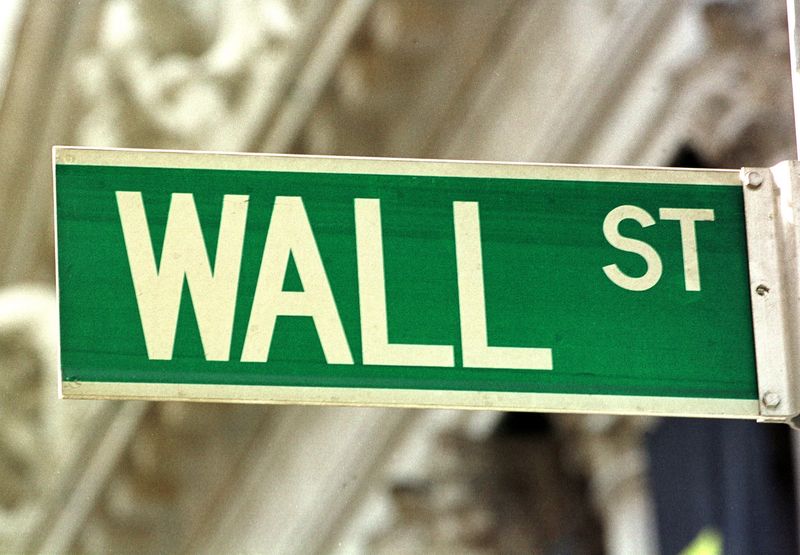© Reuters Inflection point signal for rate hike cycle? 10-year US Treasury yield continues to fall below federal funds rate target range
November 28 news from the Financial Associated Press (Edited by Xiaoxiang)With the arrival of the end-of-year Christmas holidays, Wall Street, in the festive atmosphere of recent weeks, seems to have finally temporarily dissipated the haze that has enveloped most of the year. sharply this month, and even some fund managers have resumed speculative betting on the hope that a friendlier (or at least less hostile) Fed will come back to them.
Market data shows it has risen nearly 4% so far this month and is expected to rise for the second consecutive month. European stock indices, which have always struggled in the middle of the year, have also risen for the sixth consecutive week. The index is on track for its biggest monthly drop since 2009, having dropped nearly 5% so far this month.
In the bond market, since the peak earlier this month, US 10-year, 5-year and 2-year bond yields decreased by 54 basis points, 54 basis points and 30 basis points, respectively, to 3.68%, 3, 85% and 4.42%. There are signs that the US Treasury market appears to be preparing for a possible recession next year, even as the Federal Reserve remains committed to signaling continued interest rate hikes, with traders anticipating lower long-term interest rates.
It is worth mentioning that in recent US debt performance, one signal that is easily overlooked by investors but actually quite critical is: even if the market expects the Fed to hike interest rates by about 1 percentage point over the next six months US 10-year bond yields have now begun to fall below the current federal funds target rate range of 3.75%-4%.
Inflection point signal for interest rate hike cycle?
This scene first appeared in mid-November (around the 16th). At the time, it was only a few days before US CPI data was released in October. This inflation report showed that both the headline CPI and core CPI data for October fell more than expected, and core inflation peaked. “Dawn” of US bond yields fell rapidly.
And almost since then, the steep decline in long-term yields has led to a continued widening of the yield curve inversion to a four-decade high.
Gregory Faranello, director of US interest rate trading and strategy at AmeriVet Securities, said Fed policy is developing dynamically and Fed officials are still signaling they will raise interest rates, but trading in the market tends to think that the Fed’s tightening cycle is coming to an end.
As mentioned last week, there has also been some action in the options market, with some investors taking steps to hedge against the risk of the Fed cutting interest rates to 2% (half the current rate) by the end of the month. next year.
The current market price of swap contracts shows that the market expects the benchmark interest rate to rise to a peak of around 5% by the middle of next year and will cut interest rates by more than 50 basis points from the peak by early 2024. But some are betting on a larger shift to tighten, with some investors predicting rates could fall to 3% or even 2% by late 2023 or early 2024, according to the exchanges linked to guaranteed overnight financing rate (SOFR) futures.
According to the statistics of Zhao Wei’s team at Sinolink Securities, looking back on history, after 1982, the Federal Reserve shifted its interim target from the quantitative target M2 growth rate to the price target money market interest rate.Over the next 6 interest rate hike cycles, the yield on the US 10-year bond was more than 1-2 quarters above the policy rate and peaked.In 2006, which was a relatively special one, interest rate hikes came to an abrupt halt as real estate risks loomed and the 10-year US Treasury bond rate peaked at the same time as the policy rate. The current cycle in US macro indicators of “strengthen the external and do the job” could indicate the Fed’s interest rate hike operation or abort it in the first half of next year.
Some large institutional investors, including PIMCO, have also recently been actively buying US Treasuries.
Jeffery Gundlach, known as the “new king of debt,” recently said that the rise in US bond yields may have come to an end. Flattening long-term yields – 10-year and 30-year yields are comparable – is usually a sign that a rally in bond yields is coming to an end.
Focus on Powell’s speech and nonfarm data
The US economy, especially the labor market, has thus far shown remarkable resilience in the face of continued interest rate hikes by the Federal Reserve. Therefore, if the emergence of the above inflection point signal of hikes interest rates and the declining trend in long-term bond yields can continue, the performance of US data will undoubtedly be the key.The monthly nonfarm payrolls report released this Friday by the US Department of Labor will obviously be closely watched by investors.
The size of the current long position in the Treasury market and the depth of the yield curve inversion indicate that there could be further volatility in Treasuries with the release of a series of high-level economic data, including not just the report on non-farm payrolls but also the ISM manufacturing index, the price index of personal consumption expenditure (PCE), the number of job openings, etc.
They will also listen attentively to the latest speeches by Fed Chairman Jerome Powell and his colleagues before the silent period begins.Although minutes from the last meeting suggested they could soon ease the pace of the tightening, officials remained steadfast in reaffirming the need for policy rates to be higher than current levels.
According to the schedule, Federal Reserve Chairman Powell will give a speech on the economy and the job market on Thursday at 2:30 Beijing time, a moment before Fed officials are due to stop speaking publicly to prepare for the mid-term policy meeting. December. The period of silence” will last only two days.
Simon Harvey, senior currency analyst at Monex Europe, said: “Powell’s first comments after the November 2 meeting will be crucial. If he does not choose to prevent short-term easing in financial conditions, the short-term support of the dollar it might slip.”
From the point of view of volatility indicators, although the recent VIX US stock market fear index fell as US equities rebounded, the bond market volatility indicator, the Bank of America MOVE index, remains high. For bond market investors, with the Federal Reserve’s decision approaching in mid-December, it stands to reason that one last move is still needed before the year-end holiday season…


